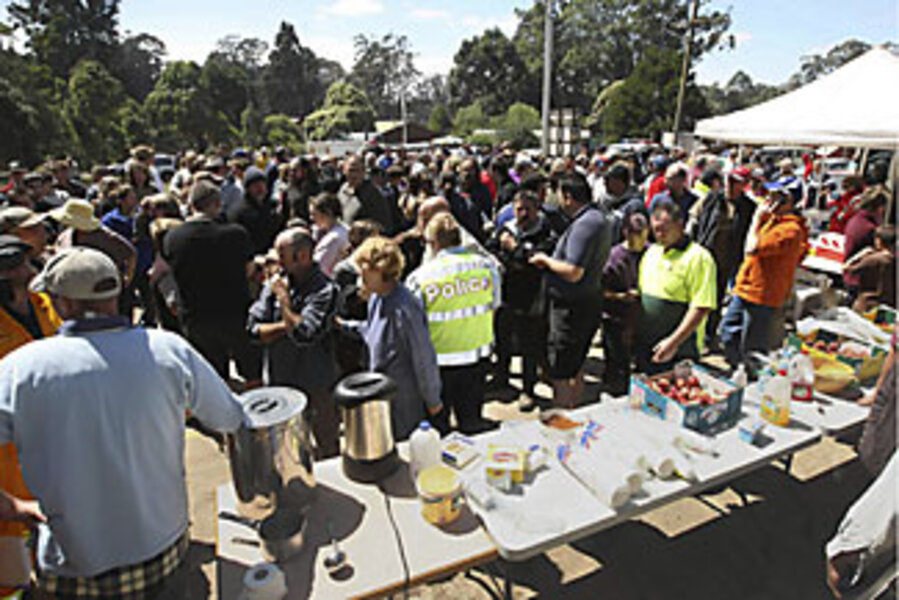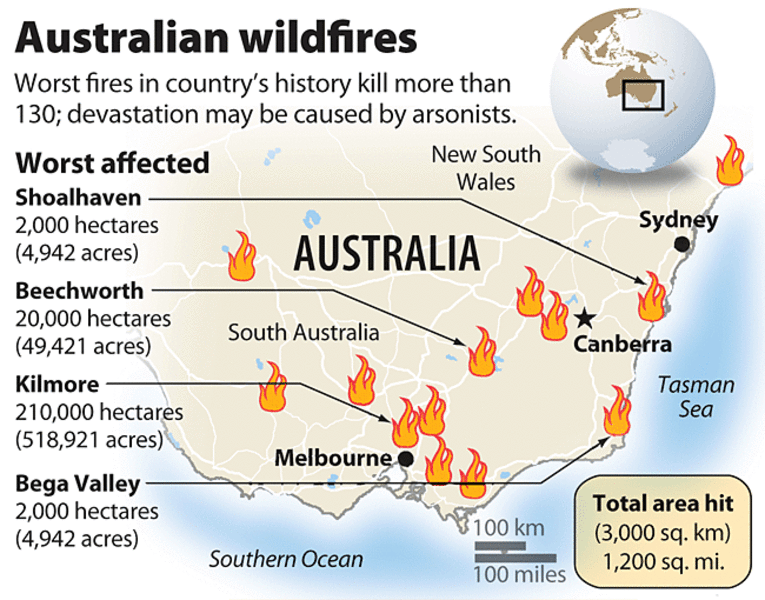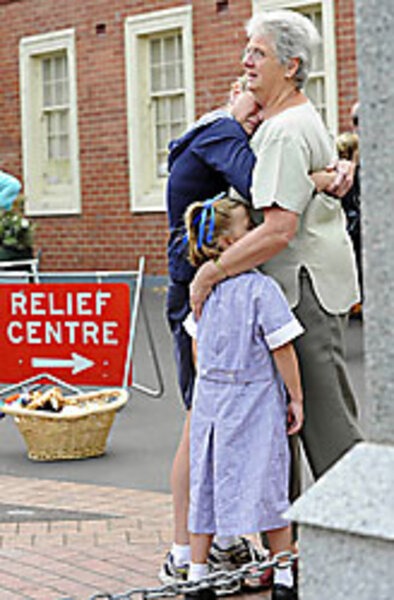Arsonist fires devastate parched Australia
| Melbourne, Australia
The death toll is climbing above 200 from weekend bush fires in southeast Australia, making it the worst natural disaster to befall the continent in 110 years.
The flames were no doubt forces of nature, but officials now believe arsonists deliberately set some of the fires, prompting Australia's prime minister to describe the devastation as "mass murder."
Many of the confirmed dead have been found in burned out cars, trapped as they tried to flee. But many others have been found in the wreckage of the more than 700 homes that were destroyed in the inferno – some were apparently trying to protect their homes from the approaching flames.
As investigators combed the massive, charred crime scenes Monday, questions were beginning to be raised over the wisdom of Australia's long-standing stay and defend advice to residents in fire-prone areas.
On Saturday, as temps reached a record high of 118 degrees F., Thomas Libreri knew the wildfires burning not far from his home in Kinglake, northeast of Melbourne, would be fierce. But Mr. Libreri stayed behind to protect his home and look after several of his neighbors.
The group used buckets of water and wet towels to put out fires from flying embers – flames twice broke out inside Libreri's home. It is now the only one out of eight in the area that remains standing.
"One minute everything was OK," he says. "Suddenly, we heard a noise that I can't describe and it was pitch black, and the next thing we were fighting the fire."
Unlike the US, where rural residents are forced to evacuate well before the flames arrive, many of those living in Australia's sparsely populated bush are prepared to defend their homes from wildfire. National radio spots commonly remind people to be ready or leave early: "If you can see the flames, it is too late to leave."
The stay and defend approach became common practice throughout Australia after the country's previous most deadly fires in 1983, when 75 people were killed – most in their own homes. Officials stress that those who are not prepared to stay – or lack the nerve to see it through – should not attempt the strategy.
"There is nothing to suggest at this stage that the stay and defend approach has failed," says Naomi Brown, chief executive officer for the Australasian Fire Authorities Council. "The fire conditions on Saturday were unprecedented in terms of their size, speed, and ferocity, but we need to conduct an analysis of whether people should be given different advice."
Experts with Australia's Bushfire Cooperative Research Centre say it's too early to judge whether the stay and defend strategy should be changed – but as some fires continue to burn in Victoria, it's stressing the continued need for early evacuation decisions. "Fleeing at the last moment is the worst possible option," says the center's Prof. John Handmer. "Sadly, this message does not seem to have been sufficiently heeded this weekend, with truly awful consequences."
Among those who did make a last-minute decision to evacuate was Melanie Powell, who had been living in a rental property with her partner in now devastated Kinglake, not far from Libreri's home. "We weren't planning to evacuate, but it all happened so quickly," she says. "Suddenly the sky went gray and we could hear like this rumbling sound as the fires were approaching from several directions."
Ms. Powell and her partner fled in a car. Only two walls remain of their home. "We've lost everything we own. But I just feel guilty that we made it out, and other people got trapped in their cars."
Until Saturday's disaster, authorities in parts of the US had shown interest in the Australian stay and defend strategy, especially as firefighting costs soar and more people continue to move to fire-prone areas of the West. Keith Harrap, a Rural Fire Service official in New South Wales, traveled to Idaho last year to discuss the idea, which he says might not be appropriate for the American West's increasingly crowded forests.
"In New South Wales we have quite stringent development regulations in bush fire-prone areas. Generally speaking, I don't think that's the case in the US, and you end up having housing in areas that are very difficult to defend."
This story was updated at 2:08 p.m. E.T. on Monday, Feb. 9.







